Introduction to Medieval Ireland and Its Brewing Heritage
In the lush landscapes of medieval Ireland, amidst castles and monasteries that dot its rich green expanses, brewing was not just a craft but a pivotal element of daily life. This era, steeped in lore and legend, was also a time of profound societal reliance on ale. Brewing in medieval Ireland was as much about community and culture as it was about producing a vital staple. The importance of brewing transcended mere consumption; it was embedded in the social fabric, serving as a symbol of hospitality, a medium of exchange, and a cornerstone of celebrations.

Ale, the predominant form of beer in medieval times, was cherished not only for its nutritional value but also for its versatility. With the absence of clean drinking water, ale became the safer alternative, consumed by men, women, and even children, marking it as an essential part of the medieval Irish diet. The process of brewing ale intertwined with the seasons and the agricultural calendar, reflecting a harmony between the people and their natural environment.
The techniques and ingredients used in brewing during this period were a testament to the ingenuity and resourcefulness of medieval Irish society. Relying on locally sourced grains, herbs, and the pure waters of Ireland’s rivers and streams, brewers of the time crafted ales that were both unique and flavorful. These ales were far different from what we might find in today’s pint glasses, yet they laid the groundwork for a brewing tradition that continues to influence modern practices.
This article aims to transport you back to those times, offering a glimpse into the art and science of medieval brewing in Ireland. We will explore the ingredients that flavored these ancient brews, the techniques that brought them to life, and the profound impact they had on society. As we delve into the past, we’ll also discover how these medieval practices have been preserved and adapted by contemporary brewers, ensuring that the legacy of Ireland’s brewing heritage continues to thrive.
The Ingredients of Tradition: What Went into Medieval Irish Ale
The alchemy of brewing in medieval Ireland was a dance of nature, tradition, and community. Unlike the hop-dominated brews of today, medieval Irish ale was a product of the land, crafted from the grains and herbs that flourished in the Irish soil. This section delves into the natural ingredients that were the backbone of medieval Irish brewing, painting a picture of a brewing tradition deeply intertwined with the environment.
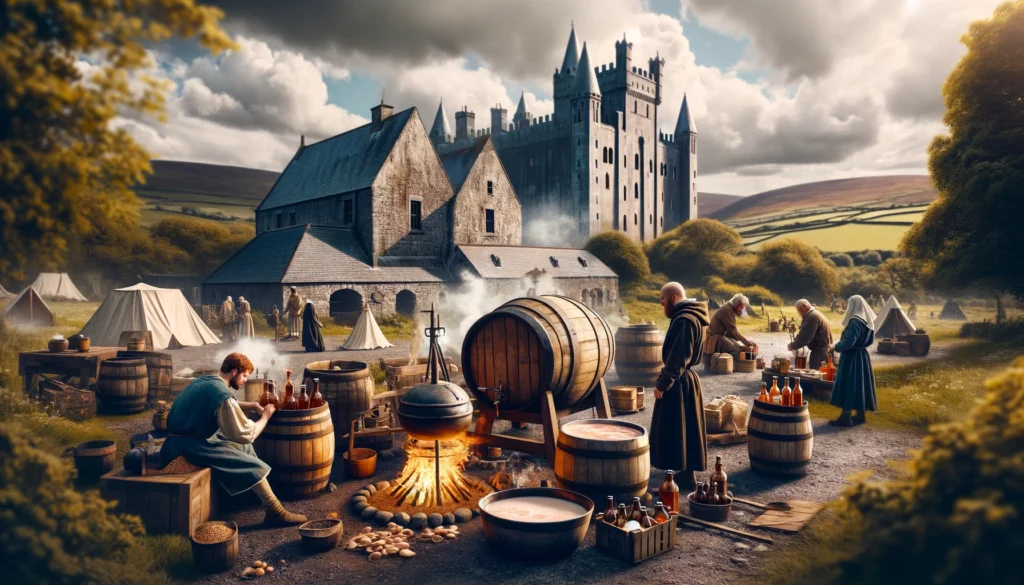
Grains: The foundation of any ale is its grain, and in medieval Ireland, barley was king. This hardy crop, well-suited to the Irish climate, was malted in a process that involved soaking the grain in water to germinate, then drying it to halt growth. This malted barley provided the sugars necessary for fermentation. Oats and wheat were also used, adding variety and nuance to the flavors of the ale.
Herbs and Gruit: In the absence of hops, which did not become widespread in Ireland until later periods, brewers turned to a mixture of herbs known as gruit for flavoring and preservation. This blend might include yarrow, heather, bog myrtle, and juniper, among others. Each herb contributed its unique properties, from the floral notes of heather to the bittering effects of bog myrtle, creating ales that were complex and varied.
Water: The purity of water in medieval Ireland cannot be overstated. The crystal-clear streams and rivers provided a clean, fresh base for brewing, influencing the final taste of the ale. The mineral content of local water sources also played a crucial role, affecting the ale’s flavor and quality.
Fermentation: Once the wort (the liquid extracted from the mashing process) was prepared, fermentation was initiated. The lack of precise temperature control and sterilization techniques meant that medieval brewers relied on natural yeasts present in the environment. This wild fermentation process would have produced ales with distinctive, unpredictable flavors, a far cry from the consistency sought in modern brewing.
Community and Craft: Brewing was a communal endeavor, with recipes and techniques passed down through generations. It was not uncommon for entire communities to come together for brewing, sharing the labor and the fruits of their work. The craft of brewing was as much about nurturing social bonds as it was about producing ale.
The ingredients and methods used in medieval Irish brewing were a reflection of the land and the people who lived there. These brews were not just drinks; they were expressions of culture, crafted from the very essence of Ireland itself. Today, as we look back on these ancient practices, we find not only the roots of modern brewing but a connection to a past where ale was a symbol of life and community.
Brewing Techniques of the Time
The process of brewing in medieval Ireland was not just a culinary pursuit; it was an art form rooted in ancient traditions and practices. This section delves into the meticulous techniques employed by medieval Irish brewers to transform basic ingredients into the cherished ales that played a central role in society.
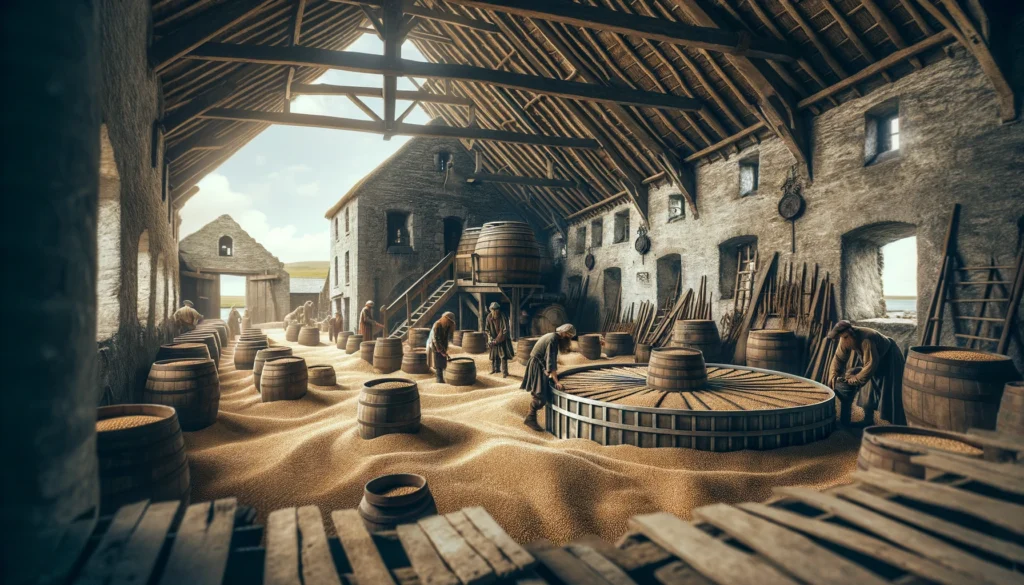
Malting: The first step in brewing was to malt the grains, primarily barley. This involved soaking the grains in water to begin germination, followed by spreading them out in a malting floor to sprout. This process activated enzymes necessary for converting the grain’s starches into fermentable sugars. After sufficient germination, the grains were dried in a kiln, halting germination and preparing them for mashing. The drying process often involved smoke from peat or wood fires, which could impart additional flavors to the malt.
Mashing: Once malted, the grains were ground into a coarse powder and mixed with hot water in a process known as mashing. This step further converted the starches into sugars, creating a sweet liquid known as wort. The temperature and duration of mashing were crucial, relying on the brewer’s knowledge and experience to optimize sugar extraction.
Fermentation: With the wort prepared, it was transferred to fermentation vessels, where yeast was added to begin the fermentation process. In the absence of cultivated yeast strains, medieval brewers often relied on wild yeasts from the environment, leading to a variety of unique and sometimes unpredictable flavors. This stage transformed the sugary wort into ale, with alcohol and carbon dioxide as byproducts.
Conditioning: After fermentation, the ale was allowed to condition, settling any remaining solids and allowing flavors to mature. This process could take place in the same vessel or after transferring the ale to a new container. The length of conditioning varied, with some ales consumed fresh and others stored for longer periods to develop more complex flavors.
Serving and Storage: Finally, the ale was ready to be served. Without the modern convenience of kegs or bottles, medieval ales were often stored and served from large barrels or casks. The lack of preservatives like hops meant that ales were more perishable and typically consumed within a short period after brewing.
Through these stages, from malting to serving, medieval Irish brewers showcased a remarkable blend of skill, intuition, and tradition. Each step was performed with care, reflecting a deep understanding of the natural processes at work. The brewing techniques of the time were not merely about producing ale; they were a celebration of community, craftsmanship, and the natural bounty of Ireland.
Social and Economic Impact of Brewing
In medieval Ireland, brewing was more than a culinary craft; it was a vital thread woven into the social and economic fabric of the community. The brewing and consumption of ale played a pivotal role in daily life, serving as a conduit for social interaction, celebration, and even economic activity. This section examines the multifaceted impact of brewing on medieval Irish society.

Community Gatherings and Celebrations: Ale was at the heart of communal gatherings and celebrations. Whether it was a feast day, a market gathering, or a wedding, ale was a symbol of hospitality and generosity. The image accompanying this section illustrates the joy and camaraderie such events fostered, with community members coming together to share in the fruits of their collective labor. These gatherings were not only social occasions but also opportunities to sample different ales, fostering a sense of pride and competition among local brewers.
Economic Significance: Brewing also had significant economic implications. For many households, brewing was a supplementary source of income, particularly for women, who were often the primary brewers in the family. The sale of ale provided a financial lifeline for many families, contributing to the household economy. On a larger scale, ale was a commodity that could be taxed and regulated, making it an important source of revenue for local lords and monasteries.
Alehouses and Taverns: The emergence of alehouses and taverns in medieval Ireland marked the commercialization of brewing. These establishments became social hubs where news was exchanged, deals were struck, and community bonds were strengthened. Alehouses also facilitated the wider distribution of ale, allowing brewers to reach a broader audience and contributing to the economic vitality of the community.
Brewing as a Household Necessity: Beyond its social and economic roles, brewing was a household necessity. The lack of safe drinking water meant that ale was often safer to drink than water. As a result, brewing was a routine domestic activity, with recipes and techniques passed down through generations. This tradition ensured that the knowledge and skills of brewing were deeply embedded in the cultural heritage of Ireland.
Influence on Agriculture: The demand for brewing ingredients had a significant impact on agriculture. The cultivation of barley, hops (in later periods), and herbs for ale production influenced farming practices and land use. This, in turn, contributed to the development of a more structured agricultural economy, with crop rotation and land management practices evolving to meet the needs of brewing.
The social and economic impact of brewing in medieval Ireland cannot be overstated. It fostered community cohesion, provided economic opportunities, and shaped the cultural landscape of the time. As we reflect on the legacy of medieval brewing, we recognize its profound influence on the development of Irish society and its enduring presence in the cultural identity of Ireland.
Preservation and Legacy: Tracing the Influence to Modern Brewing
The rich tapestry of brewing in medieval Ireland has not only survived through the centuries but has also become a pivotal influence on the modern craft brewing movement in Ireland. This final section explores how ancient brewing practices have been preserved and how they continue to inspire contemporary brewers, marrying tradition with innovation.
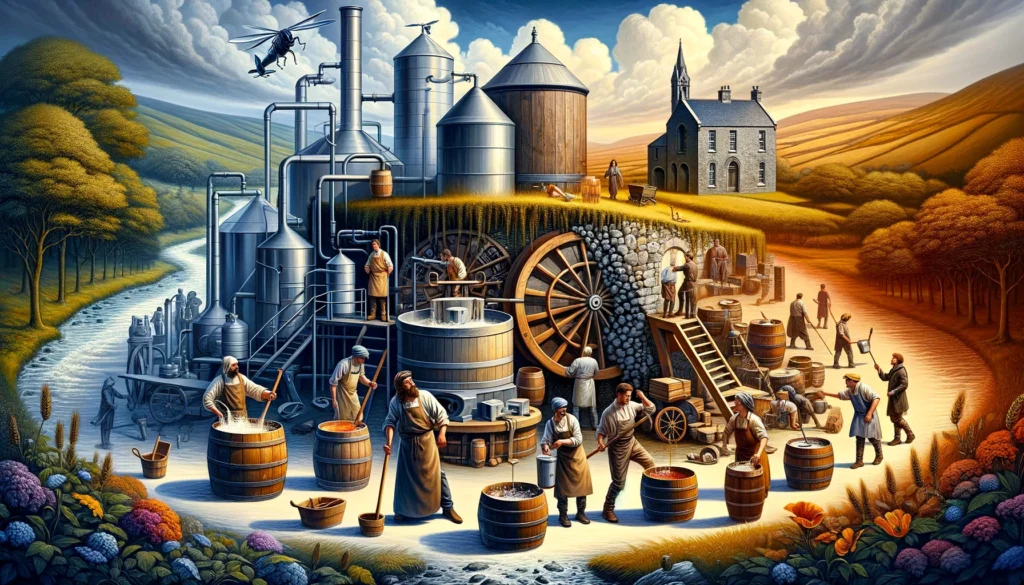
Revival of Traditional Ingredients: Modern craft brewers in Ireland are reaching back through history to rediscover and utilize traditional ingredients, such as native grains and locally foraged herbs, that characterized medieval brewing. This revival not only honors the past but also introduces modern palates to the rich diversity of flavors that these ingredients offer.
Adaptation of Ancient Techniques: While today’s brewing technology offers precision and consistency, there is a growing interest among craft brewers to experiment with ancient brewing techniques. This includes spontaneous fermentation, which relies on wild yeasts and bacteria for fermentation, much like medieval brewers did. By blending these age-old methods with modern brewing science, brewers are creating unique and complex beers that pay homage to Ireland’s brewing heritage.
Education and Engagement: Breweries across Ireland are not just places of production but also centers of education and community engagement. Through brewery tours, tastings, and brewing workshops, they share the story of Ireland’s brewing history and its influence on contemporary practices. This engagement helps to preserve the legacy and ensure it continues to be passed down to future generations.
Cultural Resurgence: The craft brewing movement in Ireland is more than a trend; it’s a cultural resurgence that celebrates the country’s rich brewing history. This movement is not only about producing beer but also about reclaiming and revitalizing Ireland’s brewing heritage. It serves as a bridge between the past and the present, allowing both to coexist and enrich each other.
A Legacy Preserved: The image accompanying this section symbolizes the harmonious fusion of medieval and modern brewing practices in Ireland. It showcases the transmission of knowledge and tradition between generations, illustrating how the ancient art of brewing continues to inspire and shape the future of beer in Ireland.
The story of brewing in Ireland is a testament to the enduring power of tradition and the capacity for innovation. As we look to the future, the legacy of medieval brewing practices remains a source of inspiration, guiding the hands of modern brewers as they craft the next chapter in Ireland’s storied brewing history.

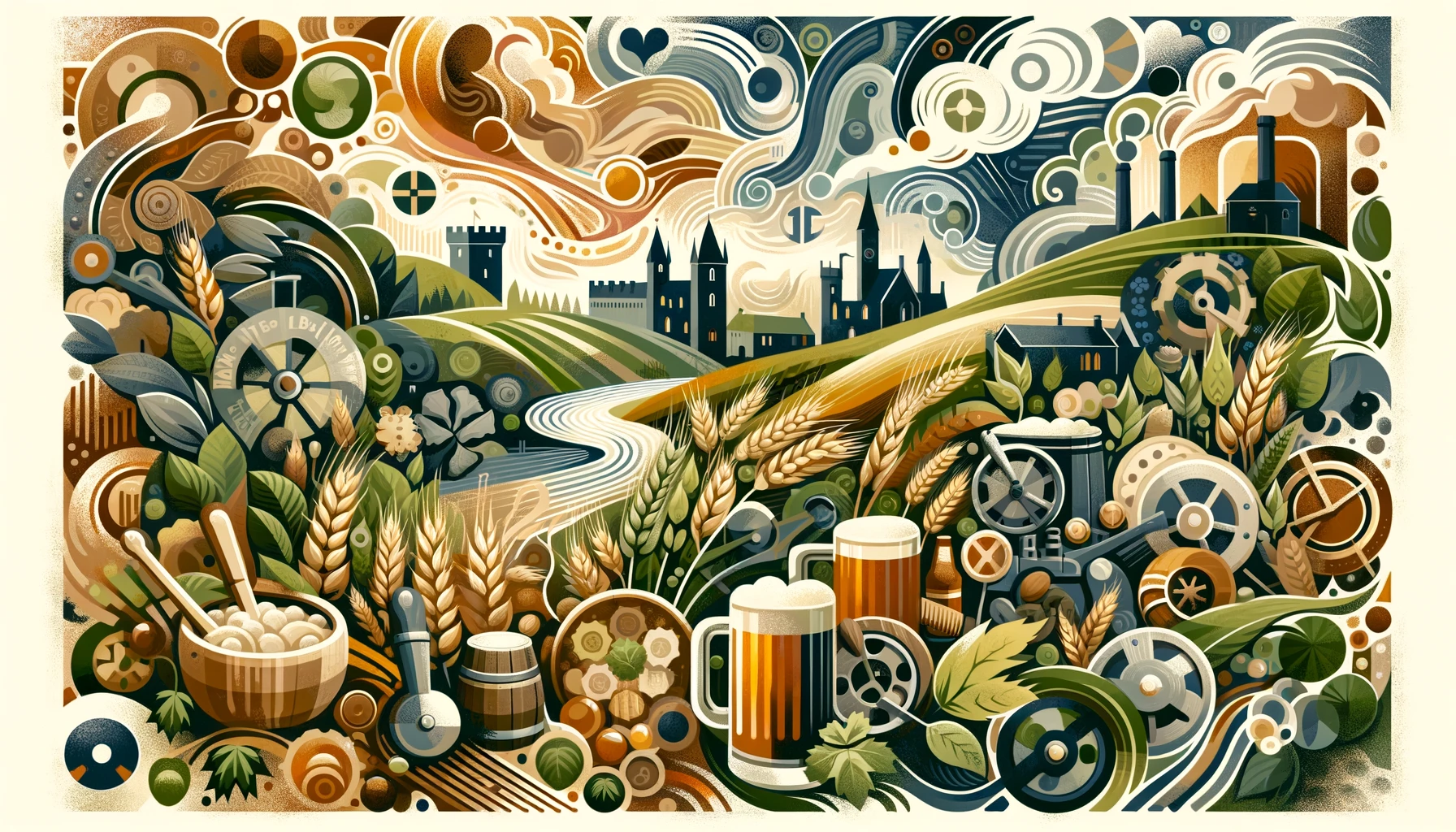
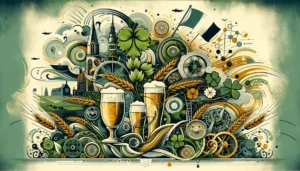
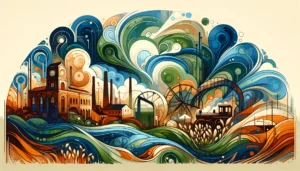

Be First to Comment